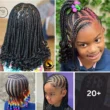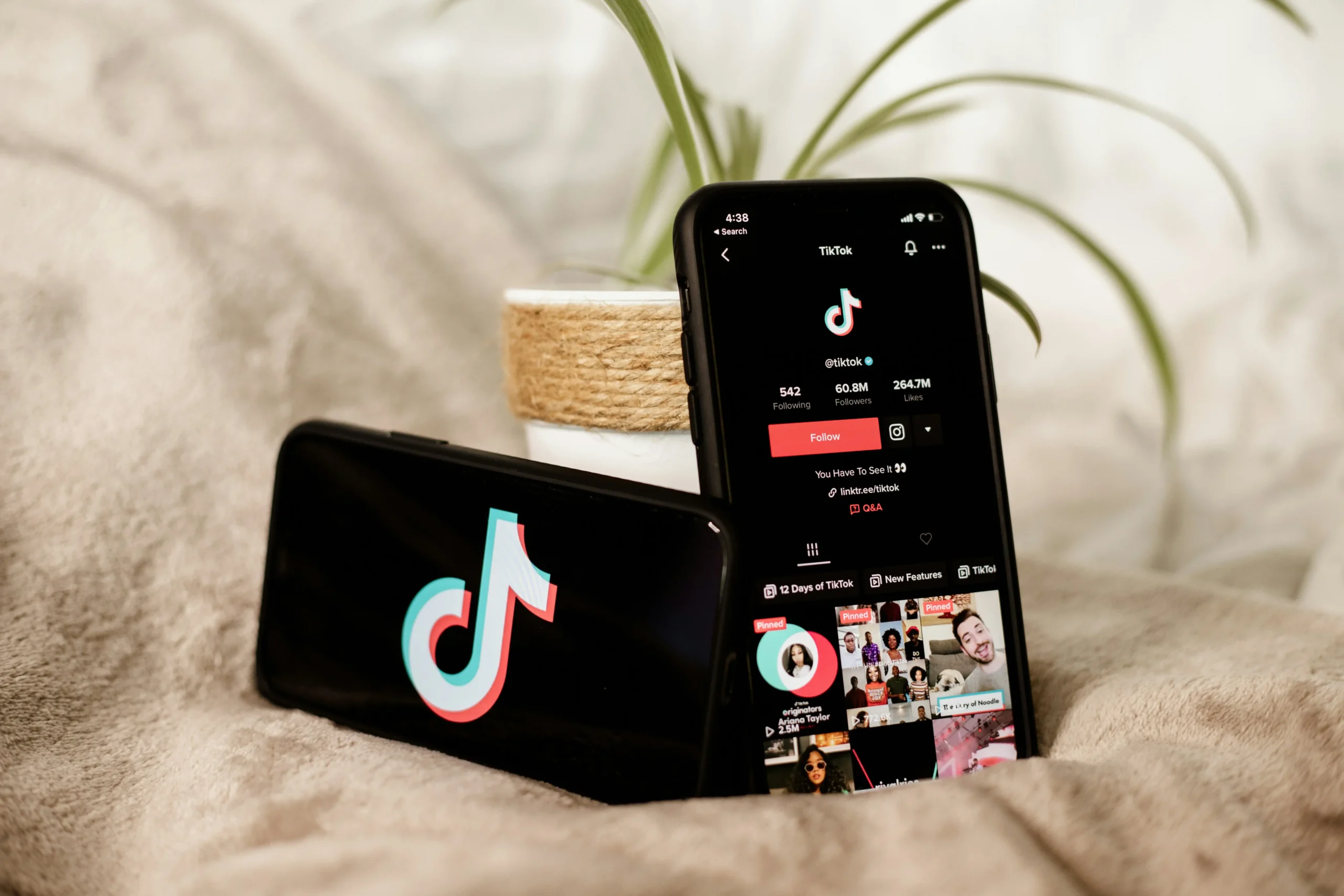“`html
Introduction to TikTok Advertising
TikTok has rapidly ascended as one of the most prominent social media platforms, capturing the attention and imagination of younger demographics worldwide. Originally launched in 2016, TikTok has swiftly amassed a global user base, making it an attractive avenue for businesses looking to advertise creatively and effectively.
With over 1 billion active users per month and a consistent top ranking in app download charts, TikTok’s astronomical rise presents significant advertising potential. Particularly favored among Generation Z and Millennials, TikTok provides a vast and engaged audience that businesses can tap into. The interactive and vibrant nature of the platform encourages high levels of user engagement, with users spending an average of 52 minutes per day on the app.
TikTok’s innovative advertising options cater to a diverse array of business objectives, from brand awareness campaigns to direct response initiatives. Companies can capitalize on various ad formats such as In-Feed Ads, Branded Hashtag Challenges, and Brand Takeovers, all designed to seamlessly integrate with the user experience. These ads leverage the platform’s unique algorithm, which ensures that content is highly relevant and personalized for each user.
Moreover, TikTok’s expansive reach spans 150 countries and 75 languages, offering unparalleled global exposure. Its ability to foster a community-driven environment through its “For You” page means that well-crafted advertisements have the potential to go viral, greatly amplifying their reach and impact.
Given TikTok’s dynamic ecosystem and burgeoning popularity, businesses can no longer afford to overlook this platform. Its combination of a vast user base, high engagement rates, and innovative advertising solutions makes it an indispensable tool in the modern marketer’s arsenal.
Setting up a TikTok business account is a crucial first step for effectively advertising on this rapidly growing platform. A business account on TikTok offers a plethora of features that are indispensable for marketers aiming to enhance their advertising campaigns. Below is a step-by-step guide on how to create a TikTok Business Account, as well as a brief exploration of the benefits it offers over a standard user account.
Step-by-Step Guide to Creating a TikTok Business Account:
First, download and install the TikTok app from the App Store or Google Play Store. Open the app and sign up using your email address, phone number, or social media accounts. Once you’ve created a personal account, you can switch to a business account. Here’s how:
1. **Visit the ‘Profile’ tab:** After logging in, tap on the ‘Profile’ tab located at the bottom right corner of the screen.
2. **Access ‘Settings and Privacy’:** Click on the three dots or the menu icon at the top right corner to access the ‘Settings and Privacy’ menu.
3. **Switch to Business Account:** In the settings menu, select ‘Manage Account,’ and then tap ‘Switch to Business Account.’
4. **Choose Business Category:** You will be prompted to select the most suitable category for your business. Categories include retail, services, education, public figure, and more.
5. **Complete Your Profile:** Fill in your business information, such as your website link, email address, and a brief description of your business.
Advantages of a Business Account:
A TikTok business account comes with several features designed to help businesses thrive. Key features exclusive to business accounts include:
1. Advanced Analytics: Business accounts offer detailed insights into your followers, engagement rates, and content performance. This data is invaluable for optimizing your marketing strategies.
2. Ad Creation Tools: TikTok provides an array of ad creation tools including access to TikTok’s Ad Manager, which allows you to create and manage advertising campaigns directly from your account.
3. Promotional Opportunities: Business accounts also have access to promotional tools like TikTok Ads and promotional codes, providing more opportunities to reach a broader audience.
4. Contact Options: You can add a direct contact button on your profile, making it easier for potential customers to reach you without navigating away from TikTok.
Setting up a TikTok business account enhances your ability to utilize the platform effectively for advertising, giving you access to essential tools and analytics that are not available to standard user accounts.
Understanding TikTok’s Advertising Options
Advertising on TikTok offers a range of options tailored to different campaign objectives and audience engagement strategies. These options include In-Feed Ads, Branded Hashtag Challenges, Branded Effects, and TopView Ads, each with its unique functionality and ideal use cases.
In-Feed Ads: These ads appear seamlessly within the “For You” page content, blending naturally with user-generated videos. They support standard video ad elements such as calls to action, links to websites or app downloads, and measurement metrics. In-Feed Ads are suitable for driving traffic, downloads, and conversions. For instance, a skincare brand might use In-Feed Ads to showcase a tutorial, prompting users to visit their website for more information.
Branded Hashtag Challenges: Unique to TikTok’s interactive platform, Branded Hashtag Challenges encourage users to participate in specific activities, leveraging user-generated content for greater exposure. Brands create a hashtag challenge, often accompanied by a catchy jingle or theme, that invites users to create and share their interpretations. A well-known example is Chipotle’s #GuacDance challenge, where users shared videos of themselves dancing for a chance to win prizes, significantly boosting engagement and brand visibility.
Branded Effects: These ads allow brands to develop custom filters, stickers, and augmented reality effects that users can incorporate in their videos. Highly engaging and shareable, Branded Effects encourage user interaction in a fun, creative manner. For example, a beauty brand might create a filter that allows users to virtually try on makeup products, promoting experimentation and brand awareness.
TopView Ads: TopView Ads provide a dominating presence by capturing the screen’s prime real estate when users first open the app. These immersive ads can last up to 60 seconds and are perfect for high-impact campaigns looking to make a bold statement. An example could be a movie studio launching a new trailer, ensuring maximum visibility and engagement as soon as users open TikTok.
Understanding these advertising formats and their strategic applications can significantly enhance your TikTok campaign’s effectiveness, driving engagement and achieving your marketing goals.
Creating Engaging TikTok Ad Content
Creating engaging ad content for TikTok requires a deep understanding of the platform’s unique environment, which is driven by short, visually compelling, and often humorous videos. Storytelling stands out as a fundamental approach; a well-constructed narrative can captivate the audience and make the ad memorable. Characters, plots, and emotional arcs can be effectively condensed into the brief time frames supported by TikTok, ensuring the content is both relatable and impactful.
Creativity is another key component. TikTok users are accustomed to innovative and original content, so ads must be visually interesting and distinctive. This can be achieved through the use of popular effects and filters available on the app, which can also help tie the ad into existing TikTok trends. Leveraging these elements within the ad not only demonstrates an understanding of the platform but also aligns the ad with viewer expectations.
Humor often reigns supreme on TikTok. Lighthearted and funny content tends to perform well, as it resonates with the platform’s predominantly youthful audience. A strategic comedic element can make an ad more shareable and increase its organic reach. However, it’s important for brands to strike the right balance, ensuring that the humor aligns with their overall message and brand identity.
Utilizing popular music and sounds is another effective strategy. TikTok’s integration of music is a core part of its appeal, and ads that incorporate trending songs or sounds can boost engagement. This approach can also help the ad feel more seamless and natural within a user’s feed, increasing its likelihood of being watched and remembered.
Challenges and user-generated content are also powerful tools. Creating branded challenges encourages user participation and can lead to viral success. For instance, the #InMyDenim challenge by Guess invited users to showcase their style transformation using a specific song and hashtag, resulting in high engagement and user-generated content that amplified the brand message.
Effective TikTok ads are those that leverage these strategies to create content that feels authentic and engaging. By focusing on storytelling, creativity, humor, music, and challenges, brands can design ads that not only capture attention but also drive meaningful interaction and engagement on the platform.
Targeting Your Audience Effectively
Effective audience targeting is a cornerstone of successful advertising on TikTok. Given the platform’s comprehensive user base, pinpointing your audience allows for more precise delivery of your message, enhancing engagement and conversion rates. Utilizing TikTok’s robust targeting options such as location, demographics, interests, and behavior is fundamental to reaching the right viewers.
Location-based targeting on TikTok enables advertisers to localize their ads to specific regions, ensuring relevance to viewers’ geographical contexts. By selecting the appropriate country, state, or city, businesses can cater to local preferences and trends, thereby increasing the appeal of their content.
Demographic targeting is another powerful tool. Marketers can tailor their advertisements based on age, gender, and language. For example, a product designed for teenagers can be effectively promoted by selecting the appropriate age group, ensuring the ad resonates with those most likely to be interested.
Another critical aspect of TikTok advertising is interest-based targeting. By analyzing users’ interactions with various types of content, TikTok allows advertisers to segment audiences according to their interests. This feature is particularly useful for niche markets, enabling brands to connect with users who are genuinely interested in their offerings.
Behavioral targeting leverages user activity patterns, such as previous interactions with ads, viewing habits, and in-app behavior, to ensure ads are displayed to those with relevant behaviors. This increases the likelihood of engagement, as the content is more aligned with the users’ interests.
Optimizing these settings calls for a strategic approach. Begin by defining your target audience with precision, understanding their needs, preferences, and behaviors. A/B testing different targeting options can also provide invaluable data on what settings yield the highest performance. Regularly reviewing and adjusting these parameters based on performance metrics will ensure continuous improvement in ad effectiveness.
Budgeting and Bidding Strategies
When it comes to advertising on TikTok, understanding budgeting options and bidding strategies is paramount. TikTok Ads Manager offers a spectrum of budgeting choices to tailor your campaigns effectively. Advertisers can choose between a daily budget, which caps the amount spent each day, or a total budget, which sets a limit for the entire campaign duration. It’s crucial to align your budget with your overall advertising goals, ensuring that spending is both manageable and sufficient to achieve desired outcomes.
In addition to setting a budget, advertisers need to decide on the appropriate bidding strategy. TikTok primarily offers two types of bids: cost-per-click (CPC) and cost-per-thousand impressions (CPM). CPC allows advertisers to pay only when a user clicks on the ad, making it a viable option for campaigns focused on driving direct user interaction. On the other hand, CPM charges advertisers for every thousand times their ad is shown, regardless of user interaction, which might be more suitable for brand awareness campaigns aiming to maximize visibility.
To bid effectively, it’s important to evaluate your campaign objectives and target audience. For instance, if the primary goal is to generate website traffic or app downloads, a CPC strategy might be more cost-efficient. Conversely, for increasing brand recognition or conveying a message to a broader audience, CPM could yield better results. TikTok Ads Manager also offers automated bidding options, where the platform adjusts bids based on performance data to optimize reach and efficiency.
Setting a realistic and strategic budget is a fine balance. Monitor performance metrics and adjust bids and budgets accordingly, ensuring cost-effectiveness while maintaining the desired reach. By understanding and leveraging these budgeting and bidding strategies, advertisers can optimize their campaigns on TikTok and achieve their marketing objectives more effectively.
Measuring and Analyzing Ad Performance
Effectively measuring and analyzing the performance of your TikTok ad campaigns is essential for ensuring that your marketing efforts yield the desired results. TikTok offers a robust suite of analytics tools specifically designed to help advertisers monitor and evaluate the success of their ads. By understanding and utilizing these tools, you can gain valuable insights into various performance metrics and make informed decisions to optimize future ad campaigns.
One of the primary metrics to consider is impressions, which indicates how many times your ad has been shown to users. A high number of impressions suggests that your ad is reaching a broad audience, but it is essential to look beyond this metric to evaluate success comprehensively.
Another crucial metric is the click-through rate (CTR), which is the percentage of users who clicked on your ad after seeing it. A higher CTR typically signifies that your ad is engaging and successfully capturing the interest of viewers. To improve your CTR, ensure that your ad content is visually engaging and contains a clear call to action.
Conversions are also a pivotal metric, as they measure the number of users who took the desired action after clicking on your ad, whether it be making a purchase, signing up for a newsletter, or downloading an app. Tracking conversions helps you gauge the effectiveness of your ad in driving meaningful actions that align with your campaign objectives.
To interpret these metrics effectively, it is vital to analyze them in context. Assess the performance trends over time, compare the data across different ad variations, and consider external factors that might influence the results, such as seasonal trends or concurrent marketing efforts. Additionally, segmenting data by demographics, geographic locations, and other relevant dimensions can provide deeper insights into which audience segments are most responsive to your ads.
By leveraging TikTok’s analytics tools and closely monitoring key performance metrics, you can make data-driven decisions to refine your targeting and creative strategies. This iterative approach allows you to continuously enhance the effectiveness of your TikTok advertising campaigns, ultimately driving better results and achieving your marketing objectives.
FAQs and Common Challenges in TikTok Advertising
One of the most common questions regarding TikTok advertising is “How much does it cost?” TikTok offers various pricing models, including cost-per-click (CPC), cost-per-impression (CPM), and cost-per-view (CPV). Advertisers can set a budget that aligns with their financial constraints. Typically, the minimum spend for a TikTok campaign starts at around $500. However, actual costs will depend on targeting options, competition, and other factors influencing the bidding process.
Another frequent inquiry is “How do I know if my ad is successful?” Evaluating the effectiveness of your TikTok ad involves monitoring key performance indicators (KPIs) such as impressions, click-through rates (CTR), engagement rates, and conversion rates. Utilizing TikTok’s analytics tools, advertisers can gain insights into audience behavior and ad performance. Regularly reviewing these metrics will help determine if objectives are being met.
When an advertisement is not performing as expected, many advertisers ask, “What should I do if my ad isn’t performing well?” Several strategies can be employed to improve underperforming ads. First, revisiting the initial target audience to ensure it aligns with the campaign goals could be beneficial. Adjusting the ad content, such as tweaking the visuals or the message, may also yield better results. Additionally, testing different ad formats or call-to-actions (CTAs) can provide critical insights on what resonates with the audience.
Addressing common challenges is crucial for successful TikTok advertising. One major challenge is ad fatigue, where users become tired of seeing the same ad repeatedly. To mitigate this, creating a diverse range of compelling content and rotating ads ensure freshness and continued engagement. Another challenge is maintaining authenticity in advertisements. TikTok’s user base values genuine and relatable content; thus, integrating user-generated content or influencer partnerships can enhance credibility and appeal.
Lastly, navigating TikTok’s evolving platform can be daunting. Staying updated with new features, trends, and platform guidelines will equip advertisers with the knowledge to adapt and optimize their strategies effectively, leading to better campaign outcomes.




